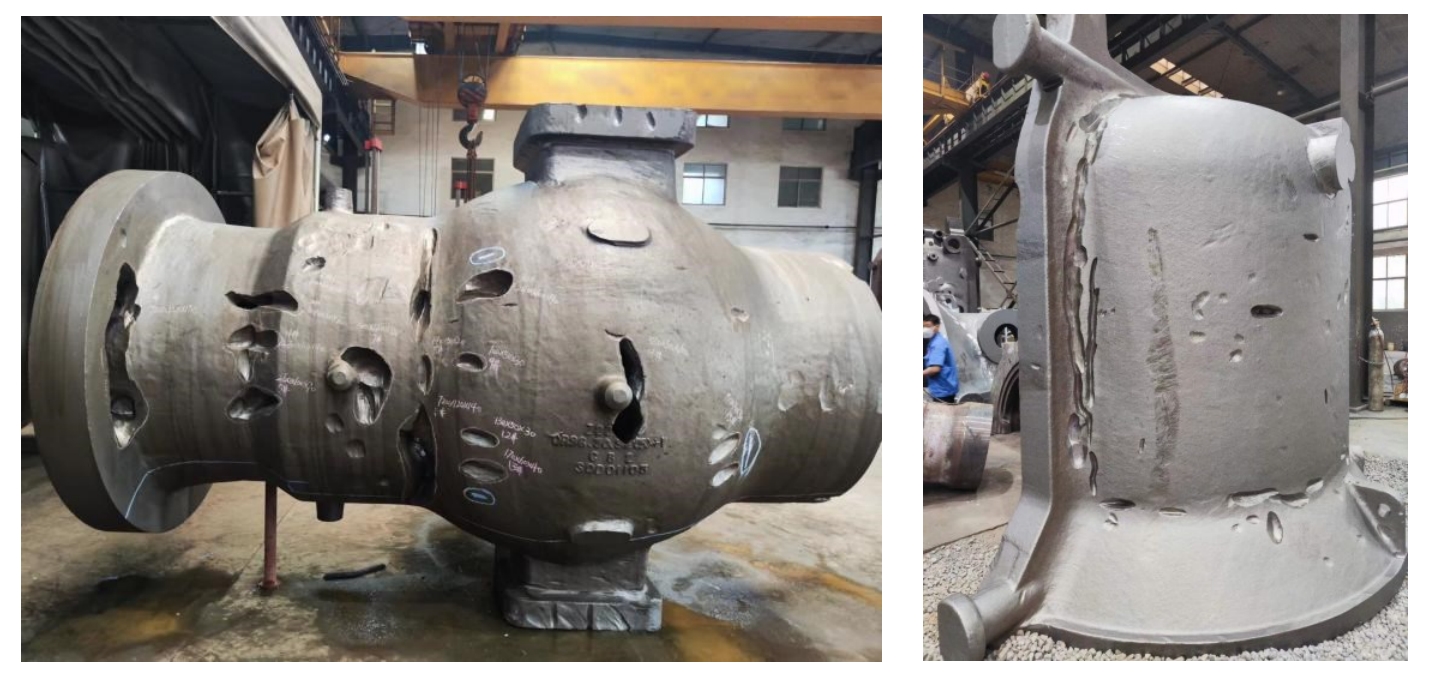This article focuses on two important aspects of aluminum alloy processing: the low-pressure casting process of the aluminum alloy moving coil skeleton and the microarc oxidation of 7A04 aluminum alloy. In the low-pressure casting section, the influence of parameters such as pouring temperature, sand mold preheating temperature, and holding pressure on the casting quality is studied through numerical simulation. In the microarc oxidation part, the effect of oxidation time on the microstructure and properties of the microarc oxidation ceramic film on the surface of 7A04 aluminum alloy is analyzed. The research results provide valuable references for improving the quality and performance of aluminum alloy products.
1. Introduction
Aluminum alloys are widely used in various fields due to their excellent properties such as low density, high strength, and good corrosion resistance. In the manufacturing process of some key components, such as the moving coil skeleton of the electric shaker and the surface treatment of aluminum alloy parts, advanced casting and surface treatment technologies are required to ensure the performance of the products. Low-pressure casting is an important casting method that can effectively improve the quality of castings, while microarc oxidation can enhance the surface properties of aluminum alloys.
2. Low-Pressure Casting of Aluminum Alloy Moving Coil Skeleton
2.1 Significance of Moving Coil Skeleton
The moving coil skeleton is the core component of the electric shaker. It needs to have characteristics such as light weight, high stiffness, and high resonance frequency to meet the requirements of vibration transmission and specimen loading. Traditional gravity casting processes often result in many defects and low product yields, so it is necessary to explore more advanced casting methods1.
2.2 Low-Pressure Casting Process and Numerical Simulation
2.2.1 Model Establishment
The material of the moving coil skeleton is ZL302 alloy. Its chemical composition and part structure are shown in Table 1 and Figure 1. The casting adopts a slit-type gating system. After geometric modeling in UG software, it is imported into ProCAST software for meshing. The meshing parameters of the sand mold and the casting are set respectively, and the final mesh numbers are obtained2.
| Mg | Si | Mn | AI |
|---|---|---|---|
| 4.5 – 5.5 | 0.8 – 1.3 | 0.1 – 0.4 | Remainder |
Table 1 Chemical composition of ZL302 aluminum alloy (%)
2.2.2 Numerical Simulation Scheme
The main parameters affecting the casting quality in low-pressure casting include pouring temperature, sand mold preheating temperature, and holding pressure. According to the principle of low-pressure casting and production experience, a numerical simulation scheme is designed, as shown in Table 2.
| Scheme | Pouring Temperature (°C) | Sand Mold Preheating Temperature (°C) | Holding Pressure (kPa) |
|---|---|---|---|
| 1 | 690 | 30 | 23 |
| 2 | 710 | 30 | 23 |
| 3 | 730 | 30 | 23 |
| 4 | 750 | 30 | 23 |
| 5 | 730 | 30 | 28 |
| 6 | 730 | 30 | 33 |
| 7 | 730 | 100 | 23 |
Table 2 Numerical simulation scheme
2.2.3 Simulation Results and Analysis
- Effect of Pouring Temperature: With the increase of pouring temperature from 690°C to 750°C, the filling time of the casting decreases from 22s to 20s, indicating that the filling efficiency is improved. At the same time, the shrinkage porosity volume of the casting shows a trend of first decreasing and then increasing. Scheme 3 (pouring temperature 730°C) has the smallest shrinkage porosity volume, as shown in Figures 2 and 33.
- Effect of Sand Mold Preheating Temperature: When the sand mold preheating temperature is increased, the filling time of the metal liquid does not change significantly, indicating that it has little effect on the filling rate. However, when the sand mold preheating temperature is increased from 30°C to 100°C, the shrinkage porosity volume of the casting decreases, as shown in Figures 4 and 54.
- Effect of Holding Pressure: With the increase of holding pressure, the shrinkage porosity volume of the casting decreases from 0.13 cm³ to 0.11 cm³. The solidification process of the casting tends to be sequential solidification, as shown in Figures 6 and 75.
3. Microarc Oxidation of 7A04 Aluminum Alloy
3.1 Preparation of Microarc Oxidation Ceramic Film
In a mixed electrolyte system of silicate and aluminate, a microarc oxidation ceramic film is prepared on the surface of 7A04 aluminum alloy.
3.2 Effect of Oxidation Time on Film Properties
3.2.1 Film Microstructure and Phase Composition
The micro-surface of the film is uneven and has a volcanic crater-like morphology. The microarc oxidation time does not change the phase type of the film, which is mainly composed of γ-Al₂O₃ and α-Al₂O₃.
3.2.2 Film Thickness Uniformity and Electrochemical Properties
Oxidation time is a key factor affecting the performance of the microarc oxidation film. When the oxidation time is 25min, the film has the best thickness uniformity, with a variance of 0.69, a corrosion potential of -0.4821V, a corrosion current density of 3.75×10⁻⁷ A/cm², and a polarization resistance of 4.63×10⁶ Ω·cm². When the oxidation time is 35min, the AC impedance performance is the best.
4. Conclusion
In the low-pressure casting of the aluminum alloy moving coil skeleton, appropriate adjustment of parameters such as pouring temperature, sand mold preheating temperature, and holding pressure can effectively improve the quality of the casting and reduce defects. In the microarc oxidation of 7A04 aluminum alloy, the oxidation time has a significant impact on the microstructure and properties of the film. These research results provide important guidance for the production and application of aluminum alloy products. Future research can further explore the optimization of processes and the improvement of product performance.

